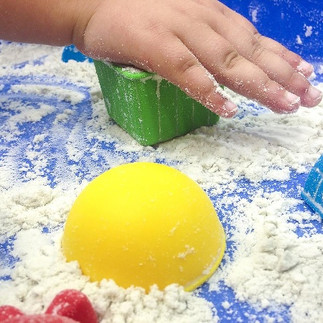What is Sensory Processing Disorder (SPD)?
- Pranali Arora
- Jan 12, 2023
- 3 min read
Updated: Nov 24, 2023
Sensory processing or sensory integration refers to the nervous system’s job of taking in all information around us through our senses (movement, touch, smell, taste, visual, and hearing) and organizing that information, so that we can attach meaning to it and act on it accordingly. It is what allows us to get an idea of what is going on in the world around us.
When we learn, we take in new information, cross reference the new information to previous similar experiences, and make an assessment as how we should proceed given the current set of information. For example, when we hear a cat meowing, our ears take in the information and our brain attaches meaning to it and we identify the animal as cat and not a dog. If you have grown up with cats around you during your childhood, the sound will make you home sick, but if you have ever bitten by a cat, you may run to get away.
The development of sensory systems begins in the womb and continues throughout our lives. In early childhood years, the nervous system is in hyper-development and sensory integration is being refined through typical childhood activities. Therefore, the first few years, are crucial for laying the foundation for our nervous system.

It can affect or interrupt the messages received from any of their senses. It is a dysfunction of sensory integration. Three categories of SPD are Sensory Modulation Disorder, Sensory Discrimination Disorder and Sensory-based Motor Disorder.

What are the general signs and symptoms of Sensory Processing Disorder?
Given below is an indicative list of signs that may point to Sensory Processing Disorder:
· Overly sensitive to touch, movement, sights, or sounds
· Under-reactive to touch, movement, sights, or sounds
· Has trouble focusing: Unable to filter
· Social and/or emotional problems
· Activity level that is unusually high or low
· Difficulty making transition from one situation to another
· Physical clumsiness
· Impulsive, lack in self-control
· Inability to unwind or calm
· Shows high tolerance to pain
· Plays roughly and takes physical risks
· Very sensitive to the way clothing feels
· Meltdown in public
· Delays in speech, language, or motor skills
If your child has a few of these symptoms, it does not mean your child has SPD. All children experience these at one point in their lives. It is only when it becomes severe, overwhelming, affects daily life, please share it with your doctor or therapist.
Is SPD a real diagnosis?
Yes and No. Sensory Processing Disorder is not yet part of the Diagnostic and Statistical Manual (DSM) for mental disorders, which list diagnoses such as depression, bipolar disorder, autism, etc. However, it is known to parents and therapist over few decades now. Sometimes the diagnosis is secondary diagnosis. For example, a child may have autism as the primary diagnosis with a secondary diagnosis of SPD.
Can a child have SPD without having another diagnosis?
Since SPD is considered a neurological impairment, there is always a chance that there could be other neurological underpinnings that are in part responsible for the sensory processing difficulties. Some of the more common traceable causes in SPD are mild brain damage during birth, premature birth, lack of sensory exposure, etc.
Can a child have SPD in addition to another diagnosis?
Yes. Lot of time SPD is overlooked and another diagnosis will be provided since its not part of DSM. Also, a child could have a primary diagnosis of autism or ADHD and have a secondary diagnosis of SPD.
Are all Sensory Processing Disorders the same?
No. Like most other things, SPD is different in each person. Effective processing of sensory information is dependent on all seven senses working properly and being able to work in conjunction with each other. Thus, there are many ways that SPD may be seen in sensory-nervous system processing and, each child will have different experience and neurological experience.
How will seeing a therapist help my child?
Psychotherapist /Occupational therapist are trained professional can be bridge between child’s nervous systems’ processing of information and your child’s functional abilities. Their goal is to help their patients lead independent, productive, and satisfying lives. They work with individuals and help individuals develop, discover, or maintain daily living, play and work/academic skills. They help patient improve their basic motor functions and reasoning abilities and compensate for permanent loss of function.
Some of the Parent friendly books that you may find helpful for SPD are listed below:
· Sensational Kids: Hope and Help for Children with Sensory Processing Disorder (SPD) by Lucy Jane Miller and Janice Roetenberg
· The Sensory Team Handbook by Mucklow, Nancy
· Understanding Your Child’s Sensory Signals by Angie Voss OTR
· The Everything Parent's Guide to Sensory Processing Disorder by Terri Mauro
· The Sensory-Sensitive Child by Karen A. Smith, Ph.D. & Karen R. Gouze, Ph.D.
# # #















Comments